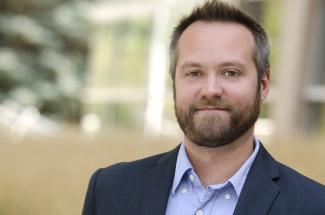Ringer, R.V., Coy, A.M., Larson, A.M., & Loschky, L.C. (2021). Investigating visual crowding of objects in complex real-world scenes. i-Perception, 12(2), 1-24. https://doi.org/10.1177/2041669521994150
Arsal, G., Suss, J., Ta, V., Ward, P., Ringer, R.V., Eccles, D.W. (2021). The modified imitation game: A method for measuring cognitive aspects of interactional expertise. Frontiers in Cognition, 12, 1-14. https://doi.org/10.3389/fpsyg.2021.730985
Ringer, R.V., & Loschky, L.C. (2018). Head in the clouds, feet on the ground: Applying our terrestrial minds to satellite perspectives. In A. Coltkein & R. Hoffman, Remote Sensing and Cognition: Human Factors in Image Interpretation (63-86). Boca Raton, FL: CRC Press.
Ringer, R.V., Throneburg, Z., Johnson, A.P., Kramer, A.F., & Loschky, L.C. (2016). Impairing the useful field of view in natural scenes: Tunnel vision versus general interference. Journal of Vision, 16(2), 1-25.
Loschky, L.C., Ringer, R.V., Ellis, K., & Hansen, B.C. (2015). Comparing rapid scene categorization of aerial and terrestrial views: A new perspective on scene gist. Journal of Vision, 15(6):11, 1-29.
Larson, A.M., Freeman, T.E., Ringer, R.V., & Loschky, L.C. (2014). The spatiotemporal dynamics of scene gist recognition. Journal of Experimental Psychology: Human Perception and Performance, 40(2), 471-487.
Loschky, L.C., Ringer, R.V., Johnson, A.P., Larson, A.M., Neider, M., & Kramer, A.F. (2014). Blur Detection is unaffected by cognitive load. Visual Cognition, 22(3-4), 522-547.
Ringer, R.V., Johnson, A.P., Gaspar, J.G., Neider, M.B., Crowell, J., Kramer, A.F., Loschky, L.C. (2014, March). Creating a new dynamic measure of the useful field of view using gaze-contingent displays. Proceedings of the Symposium on Eye Tracking Research and Applications, 59-66.

